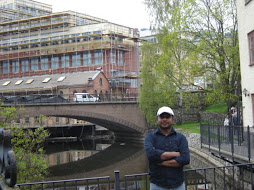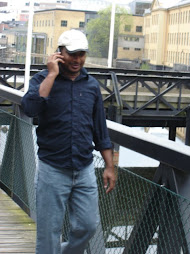Delve into the history of human knowledge. Comprehend why oral cultures may be more pure than literate cultures. Writing down thoughts changes the way we think and look at the world. Walter Ong express this and more in this easy to read, head slapping book. You will find yourself understanding everything you have ever read better. You will see knowledge and intelligence differently. Your basic understanding of humanity will change for the better with Orality and Literacy.
This book represents a very concise, easy to read summary of much of Ong's work in the area of human communications and technology. The depth of scholarship evident can easily be followed upon by using the wide-ranging bibliography. Ong masterfully takes the idea of the power of the alphabet, and points to the impact this has on human understanding, an impact which has not fully been accepted in philosophy, history, anthropology, sociology, etc. The student and scholar would do well to creatively interact with Ong's work.
The book explains the relations between Orality and Writing .How the Orality is converted into writing .It also expalins how the New media tools helped writing to develop .At first the humans have identified that words are not made up of words but of funtional sound units (or) phonemes,further these sound units are converted into words.The communication can be classified into ways one Oral communication and non-oralcommunication.
In this chapter Ong briefly outlines some of the research that had been done by himself and other scholars to describe the differences between oral and literate cultures. He defines the oral culture to which he refers in this book as one where people ar e totally unfamiliar with writing. He reminds us that these primary oral cultures are actually in the majority and that from a historical standpoint writing is a relatively recent development; even among the 3,000 or so languages which currently exist on ly 78 have a literature (page 7, from Edmonson 1971, 323, 332). Our membership in a society as completely committed to writing and print as ours has made it necessary for him, and others, to describe primary orality in relation to literacy. This necessi ty, he says, led to the use of such preposterous terms as ‘oral literature,' one which "reveals our inability to represent to our own minds a heritage of verbally organized materials except as some variant of writing, even when they have nothing to do wit h writing at all" (11).
It describes the origin of different languages in different continents.The author states that a lot of languages have been disappeared and some languages still exits without scripts.He also described some characteristics of orally based thought and expression.These characteristics gives a very good concept of creating words formulae and expressions.
In this final chapter, Ong suggests that the concepts he has outlined in this book might provide inspiration for new interpretation by adherents of New Criticism and Formalism, Structuralism, textual and deconstructionist analysis, Speech-act and Reader- Response theory as well as those engaged in the study of literary history, the social sciences, philosophy and biblical studies.
At the end of this chapter, Ong goes to great pains to indicate that he feels that neither orality nor literacy is superior. Myron C. Tuman, in Words, Tools, and Technology (College English, 1983), seems to have missed this. At one point Tuman criticize s Ong for conveying "the sense that literacy offers a vast improvement over earlier techniques for storing verbal meaning," and implies that this means that Ong feels that literacy is superior to orality (770). Later, however, he criticizes Ong for depic ting literacy as opposite and somehow less attractive than primary orality (777). Perhaps Tuman's confusion has to do with Ong's choice of words in stating that "both orality, and the growth of literacy out of orality, are necessary for evolution of cons ciousness"(175). In a "survival of the fittest" sense of the word "evolution," Ong's statement could be construed as an implication that literacy is the "fitter" of the two. At the end of the seventh chapter, however, Ong clearly states that he does not believe that literacy is necessarily "superior" to orality (175).
In his short review of Orality and Literacy for the Winter 1982 issue of Et cetera, Paul Lippert concludes "that for the study of culture and communication . . . this book will become a landmark"(402). The fact that Methuen saw fit to reprint Orality an d Literacy five times suggests that Lippert was correct. Ong's book and the work of others who investigated the differences between orality and literacy in the early 1980s inspired considerable research, much of it in areas that Ong suggests in his seven th chapter. However, fourteen years after its first publication this book and its subject matter can still provide fertile ground for research. In 1982, Ong could not have foreseen the popularity of audiobooks, or the widescale use of such technology as editable voice-mail telephone service and the synchronous text-based communication made possible by the internet. No doubt, the time is right for a sequel to Orality and Literacy, one devoted entirely to the second orality.
Monday, March 10, 2008
Subscribe to:
Posts (Atom)


